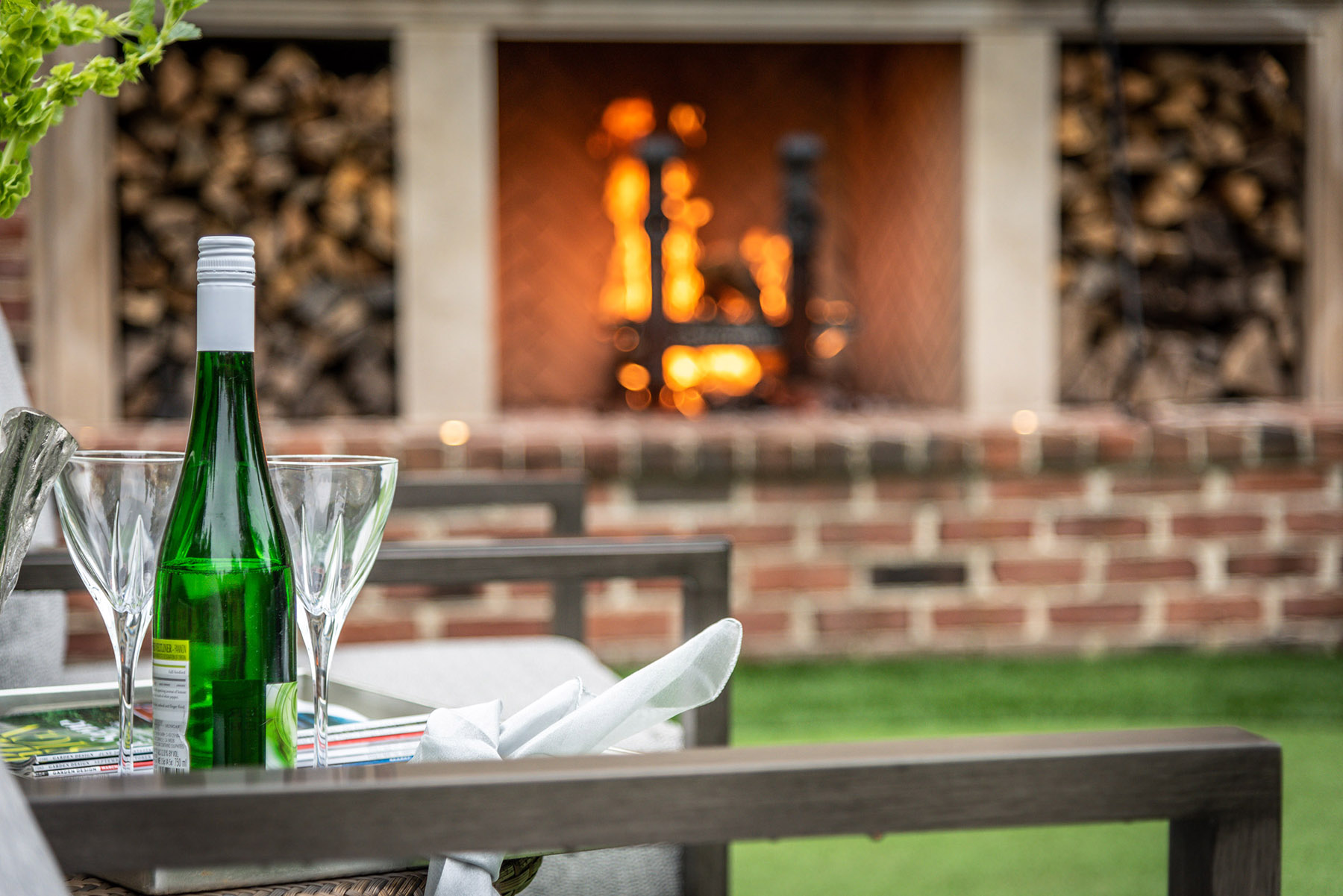
When a Birmingham family that loves to golf needed a multifunctional green space to gather with loved ones and engage in family competitions, the answer was a synthetic turf putting green.
While “Astroturf” is synonymous with its 1960s heyday, a la The Brady Bunch backyard, today’s synthetic turf looks natural. “This turf has become something different than the beach vacation miniature golf product,” says Daniel McCurry, co-founder and CEO of Father Nature Landscapes. “It is a highly studied, high-tech option that supports stimp, the roll speed of golf balls, much like a grass putting green.”
Daniel explains that most of the putting green spaces they design are multifunctional. “Our mission is to assist our clients in better connecting with their friends and family in their custom outdoor living environment,” he says. “In this case, the wife wanted her children, sisters, and friends to be able to get together by a fire and talk, while the husband wanted the same but through competition with his sons on a putting green.”



“Blending synthetic turf into its natural surroundings might include planting a border of dwarf evergreen grass. It also helps to not place the turf within view of an expanse of natural grass.”
Daniel McCurry, Father Nature Landscapes
The Father Nature team designed a green that delivers a dynamic practice experience for the skilled father and sons but also provides fun for players of any level when the homeowners host friends and family. In addition, the design offers a seating area in front of a wood-burning fireplace for a more intimate outdoor entertaining experience.
Daniel explains that the use of synthetic turf is essential to the function of a home putting green. “A real turf putting surface requires an incredible amount of maintenance,” he says. “For this project, we chose Southwest Greens synthetic turf.”

According to Daniel, many varieties of modern synthetic turf emulate the look of a variety of grasses, including Bentgrass, Bermuda, and Zoysia. Brown, curled blades woven into the base of the surface provide a more realistic look of dirt beneath the “sod” while providing a bounce similar to the feel of a real lawn underfoot. “You really have to lay on the grass and touch it to figure out that it is synthetic,” Daniel says. He notes that while there definitely are instances where natural grass can’t be beat, lawns that are highly-used and heavily shaded are ideal candidates for artificial turf.
For this family, the turf allows everyone to enjoy gathering on the lawn, whether to play golf or simply enjoy relaxing by the fire. “Spending time outside with family and friends is one of the best ways to make lasting memories,” Daniel says.
Synthetic Turf vs. Natural Turf

Synthetic turf comes with some advantages and disadvantages for the homeowner, just like natural grass. “Synthetic turf fits with the goal of having a lower maintenance lawn—no more cutting,” says Daniel McCurry of Father Nature Landscapes. “It also has grown in popularity due to environmental concerns.” Real turf for a putting green requires daily mowing, fans, water, fertilizers, pesticides, aeration, topdress, and more. Adds Daniel, “We do irrigate (artificial lawns) to keep the surface clean of dust, as well as to wash off pet urine and keep it cooler during the summer.”
Daniel also notes that while the initial cost of synthetic turf may be higher and the installation is more labor intensive, the cost of maintaining natural grass lawns over time comes at a higher price tag.
Father Nature Landscapes – fathernaturelandscapes.com





